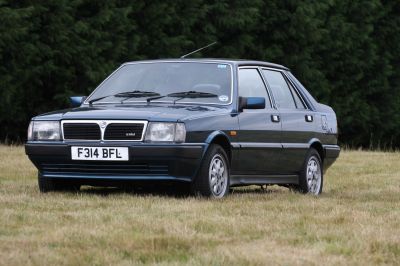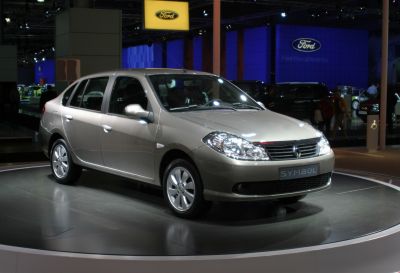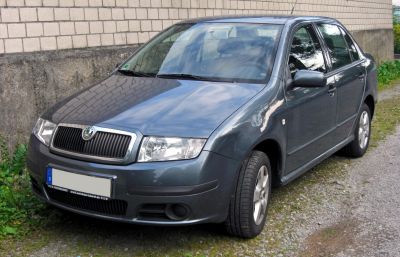 1979 Volkswagen Jetta I Dimensions, Size & Specs
1979 Volkswagen Jetta I Dimensions, Size & SpecsMeasurements of the 1979 Volkswagen Jetta I, engineered for optimal performance and comfort
| Dimensions | |
|---|---|
| Length: | 4190 mm165.0 in13.7 ft |
| Width: | 1610-1630 mm63.4-64.2 in5.3-5.3 ft |
| Height: | 1395-1410 mm54.9-55.5 in4.6-4.6 ft |
| Trunk Capacity: | 629 liter22.2 cu ft |
| Weight Specifications | |
| Curb Weight: | 810-894 kg1786-1971 lbs |
| Maximal permitted Weight: | 1240-1280 kg2734-2822 lbs |
| Tire Specifications | |
| Rims Sizes: | 13-inch rims:
|
| Tire Size: |
|
The Volkswagen Jetta I, produced from 1979 to 1983, marked an important milestone as Volkswagen’s compact sedan offering during the late 20th century. Spanning a length just shy of 4.2 meters (4188 - 4190 mm or approximately 164.8 - 165 inches), the Jetta I presented a balanced footprint that combined maneuverability with passenger comfort. With a width ranging from 1610 to 1630 mm (63.4 - 64.2 inches) and a height of 1395 to 1410 mm (54.9 - 55.5 inches), this first-generation Jetta sat low to the ground, delivering a classic sedan profile that emphasized aerodynamics and stability.
Weighing in between 810 and 894 kg (1786 - 1971 lbs) depending on configuration, the Jetta I was light by modern standards, which contributed to its fuel efficiency and nimble handling. Its maximum permissible weight ranged between 1240 and 1280 kg (2734 - 2822 lbs), allowing the vehicle to carry passengers and cargo effectively without sacrificing performance. The luggage compartment was notably spacious for a vehicle of its size, offering 629 liters (22.2 cubic feet) of cargo capacity — a valuable trait for families and daily use.
Volkswagen equipped the Jetta I with tire sizes of 175/70 R13 and rim options including 5J x 13 and wider 5.5J x 13, providing a stable ride with good road contact. This generation's classic sedan design remains a significant part of automotive history, blending practical dimensions suited for urban and suburban driving with efficient use of space and a lightweight chassis. Whether considered from the standpoint of vintage appeal or size specifications, the Volkswagen Jetta I represents a compelling balance of compact car engineering from the late 1970s and early 1980s.
Discover the standout features that make the 1979 Volkswagen Jetta I a leader in its class
Have a question? Please check our knowledgebase first.
The Volkswagen Jetta I, produced from 1979 to 1983, measures between 4188 mm and 4190 mm (164.8 to 165 inches) in length, 1610 mm to 1630 mm (63.4 to 64.2 inches) in width, and 1395 mm to 1410 mm (54.9 to 55.5 inches) in height. These dimensions reflect a compact sedan size typical for its era, offering a practical footprint for urban and suburban driving with easy maneuverability and adequate cabin space.
The Volkswagen Jetta I has a curb weight ranging from 810 kg to 894 kg (approximately 1786 to 1971 lbs). The maximum weight capacity, which includes passengers and cargo, falls between 1240 kg and 1280 kg (around 2734 to 2822 lbs). This relatively light weight contributed to the sedan's fuel efficiency and handling, making it a practical choice during its production period for economical and reliable transportation.
The luggage capacity of the Volkswagen Jetta I is 629 liters (about 22.2 cubic feet), which is quite spacious for a compact sedan of its time. This generous trunk space provides ample room for luggage, groceries, or other cargo, often surpassing the trunk volume offered by other compact sedans from the late 1970s and early 1980s. It made the Jetta a practical choice for families or individuals needing extra storage without moving to a larger vehicle.
Yes, the Volkswagen Jetta I fits comfortably into a standard residential garage. Since most standard single-car garages have internal dimensions of about 3 to 3.7 meters (10 to 12 feet) wide and 6 to 7 meters (20 to 23 feet) deep, the Jetta’s length of approximately 4.19 meters (13.75 feet) and width of up to 1.63 meters (5.35 feet) allow for easy parking with sufficient clearance around the vehicle for opening doors and maneuvering around it.
The Volkswagen Jetta I comes with rims sized 5J x 13 and 5.5J x 13 inches, paired with tires sized 175/70 R13. These sizes reflect the design standards of the late 1970s and early 1980s, focusing on providing a balance between ride comfort and handling performance. The tire size ensures good grip and road contact while maintaining a smooth ride, consistent with the Jetta’s role as a practical, everyday compact sedan.
The Volkswagen Jetta I utilizes its compact external dimensions efficiently to provide a comfortable interior cabin space for both driver and passengers. Despite its modest length and width, the sedan’s design allows for adequate legroom and headroom for front and rear occupants. The relatively tall height of up to 1410 mm (55.5 inches) contributes to headroom, making the cabin feel less cramped and improving overall comfort for a compact car of that era.
The Volkswagen Jetta I was effectively the first generation of the Jetta line and thus did not have a direct Jetta predecessor. However, it was developed based on the Volkswagen Golf Mk1 platform with a longer trunk to serve as a sedan alternative to the Golf hatchback. Compared to the Golf Mk1, the Jetta I is slightly longer to accommodate its distinct sedan body style, but it shares similar width and height dimensions, offering sedan practicality with Golf’s compact agility.
Compared to other compact sedans from the late 1970s and early 1980s, such as the Toyota Corolla E70 or the Ford Escort Mk3, the Volkswagen Jetta I is quite competitive in terms of size and cargo capacity. Its length and width fall within the average range for compact sedans of that era, while its luggage capacity of 629 liters (22.2 cubic feet) is often larger, providing practical advantages. The Jetta I also stands out for its German engineering focus on driving dynamics and build quality, offering a more refined driving experience compared to some contemporaries.
Yes, the Volkswagen Jetta I is well-suited for urban driving. Its compact dimensions—length just over 4.18 meters (13.7 feet) and width around 1.6 meters (5.3 feet)—make it easy to maneuver and park in crowded city environments. The relatively light curb weight, ranging from 810 to 894 kg (1786 to 1971 lbs), contributes to nimble handling and fuel efficiency, important attributes for stop-and-go traffic and tight spaces typically encountered in urban areas.
The Volkswagen Jetta I's size played a significant role in its popularity during the late 1970s and early 1980s. Its compact exterior dimensions made it affordable to own and operate, easier to park and navigate through narrow streets, and more fuel-efficient than larger cars. The spacious 629-liter (22.2 cubic feet) trunk offered practicality that appealed to families and individuals needing cargo space without moving to an intermediate or full-size sedan. These factors combined to establish the Jetta I as an accessible yet practical option in the compact car market.
Discover similar sized cars.

| Production: | 1982-1992 |
|---|---|
| Model Year: | 1982 |
| Length: | 4180 mm164.6 in |
| Width: | 1620 mm63.8 in |
| Height: | 1385 mm54.5 in |

| Production: | 2008-2012 |
|---|---|
| Model Year: | 2008 |
| Length: | 4261 mm167.8 in |
| Width: | 1640-1940 mm64.6-76.4 in |
| Height: | 1430-1439 mm56.3-56.7 in |

| Production: | 1983-1990 |
|---|---|
| Model Year: | 1984 |
| Length: | 4200 mm165.4 in |
| Width: | 1610 mm63.4 in |
| Height: | 1400 mm55.1 in |

| Production: | 2004-2007 |
|---|---|
| Model Year: | 2004 |
| Length: | 4232 mm166.6 in |
| Width: | 1893 mm74.5 in |
| Height: | 1449 mm57.0 in |
